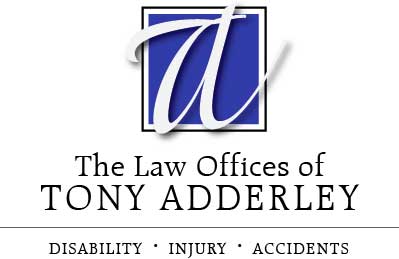Most of us in the United States already are aware that the Social Security Administration is a part of the federal government and that it pays monthly retirement benefits to millions of older, retired workers. What you may not realize, however, is that the Social Security Administration also issues monthly benefit checks to disabled children and to disabled adults who are less than 62 years of age. Social Security Disability Insurance pays cash benefits to people under the retirement age who meet the Social Security Administration’s complicated definition of disability.
Frankly speaking, the Social Security disability benefit payments barely amount to enough to keep most disabled beneficiaries from falling below the poverty line. Nevertheless, unless Congress acts decisively and swiftly, more than eleven million disabled persons in this nation may face a severe and sudden reduction of their disability insurance benefits, when the Social Security Administration will be able to pay only eighty-one percent of the disability benefits that those recipients are entitled to by federal law. Why the projected benefit reduction? Because the Social Security disability trust fund is running out of money. It’s just that simple. It’s a funding problem that may very rapidly become a funding crisis. And it’s not as if Congress hasn’t seen this crunch coming – for years.

Once a year, the trustees of the several Social Security trust funds publish a detailed report on the current and projected financial stability and status of those trust funds. For now, if you need to qualify for Social Security disability benefits in the Los Angeles area or if you’ve been denied benefits and you need help to appeal that denial, you should arrange to speak about your situation with an experienced Los Angeles Social Security disability attorney.
SOCIAL SECURITY FUNDING A LONG-TERM PROBLEM
The Social Security funding problem is a long-term result of the way the Social Security disability trust fund has been financed. Nearly sixty million people in the United States receive Social Security benefits, including forty-two million retired workers and their dependents, eleven million disabled workers, and six million survivors of deceased workers. The Social Security Act of 1935 established three types of benefits: retirement benefits, survivors’ benefits, and disability benefits, but the funding for each type of Social Security benefit has always been maintained separately. Congress has established a formula for distributing into the three funds the FICA contributions from employees and employers. The reason there’s now a shortfall in the disability fund is because of a rising number of persons receiving disability benefits. As the nation’s overall population has aged in recent decades, many more people are become disabled and are now unable to work. The aging of the baby boomers, along with the rising numbers of women in the workforce, account for most of the increases in recent decades in the number of Social Security disability benefit recipients.

MORE CONFLICT IS EXPECTED
The problem will not be easy to fix. Not only is there currently no codified legal mechanism for transferring resources from the other two Social Security funds into the disability fund, but the impending October deadline creates an opportunity for more even conflict between President Obama and the Republican leaders in Congress. The Obama Administration wants to replenish the disability trust fund by transferring a portion of the payroll tax revenues from Social Security’s retirement trust fund to the disability fund. Republicans, however, are aggressively insisting on more substantial, systemic reforms. The Republican plan combines lower monthly payment amounts with more stringent eligibility criteria, new efforts to fight disability fraud, and new programs to help the partially and temporarily disabled return productively to the workforce.
In their 2015 report, the trustees of the Social Security funds say that the financial pressure on the disability program is “but the first manifestation of larger financial imbalances facing Social Security as a whole, as well as Medicare.” The trustees also say that the reserves of Social Security’s combined retirement and disability trust funds will be depleted in the mid-2030s. At that time, the trustees believe, retirement and disability benefits will have to be reduced by twenty-five percent – unless the system is comprehensively reformed at some point during the next two decades.
Although the two funds are often considered together, the Social Security trust fund for retirees and the fund for disabled workers are distinct legal entities that operate autonomously and independently of one another. Social Security administrators may not shift any resources from one fund to the other unless Congress directly orders them to make such a reallocation. The last time Congress had to boost the disability trust fund with a reallocation of resources was in the mid -1990s, but money has historically moved in the other direction as well.

A POSITIVE AND PRACTICAL IMPACT
Disability insurance is a core part of the overall Social Security system. The average recipient of disability benefits earned just over $42,000 annually before becoming disabled. The average monthly benefit, however, is only $1,017. Secretary of the Treasury Jacob J. Lew, who is currently the manager of the trust funds, has said the funding transfers suggested by the Obama Administration are “a common sense solution to improve the solvency” of the imperiled disability fund. However, Republican Senator Orrin G. Hatch of Utah, who chairs the Senate Finance Committee, said that “reshuffling” money is not going to be the final solution to the serious financial difficulties facing the various Social Security programs.
Despite its overwhelmingly positive and practical impact on millions of disabled workers lives, many of us still understand very little about how Social Security Disability Insurance – SSDI – actually works. To become eligible for Social Security disability benefit payments, a disabled applicant must establish and submit a detailed and precise work history listing all of the jobs he or she has held over the last fifteen years. If you apply for disability benefits, you’ll also need to provide detailed records of your work hours, pay rates, and a description of the basic tasks you performed and skills that were required. In fact, the more information that you can provide, the more likely you are to be successful when you seek to receive Social Security disability benefits.
Upon receiving your application, work history, and medical information, the Social Security Administration then employs a “credit” system that determines your precise benefit eligibility. In 2014, for example, a worker earned one credit for every $1,220 of wages or self-employment income up to a maximum of four credits per year. Most disability applicants need from twenty to forty credits (or between five and ten years of full employment) to become eligible for payments, with at least twenty credits earned in the ten years immediately prior to the onset of the disability. The total number of credits needed goes up with age, so that workers ages 31 to 42 need at least twenty credits; those ages 43 to 62 need one extra credit for each year of age; those age 62 and older require forty credits. Almost eighty percent of disability benefit recipients are age 45 or older.
A COMPLICATED LEGAL PROCEDURE
The Social Security Administration will consider you “disabled” only if you have a medical problem that keeps you from performing “substantial gainful activity.” Substantial gainful activity can be paid employment, volunteering, or even attending school. Your medical problem must also be serious enough that it has lasted or will endure for at least a year. Obtaining benefits is a complicated legal procedure, so it’s a good idea to let an experienced Los Angeles Social Security disability attorney explain the details of applying for disability benefits and guide you through the process from start to finish. An attorney can also help you avoid the common mistakes and misunderstandings that result in delays, and if you are denied disability benefits for any reason, a disability attorney can represent you and advocate on your behalf in hearings and appeals, and if necessary, in federal court. It can take some time – and patience – until you receive your first benefit payment, so if you need disability benefits it is absolutely vital to get started as soon as possible.
Congress still has abundant time to address Social Security’s short-term and long-term problems without being compelled to reduce anyone’s disability benefits. But the longer Congress waits to act, the harder it becomes to address Social Security’s funding issues without having to take drastic measures. For now, Social Security Disability Insurance is a lifesaver for millions of disabled workers in the United States. And right now, the Social Security Disability Insurance system is solvent, so if you are disabled in Los Angeles County or anywhere in southern California, the time to apply for Social Security disability benefits is now. To learn more about disability benefits, comment below or reach out to us on our social media channels, we’d love to hear from you. If you need legal help regarding Social Security Disability Insurance, speak with experienced Los Angeles Social Security Disability today.

